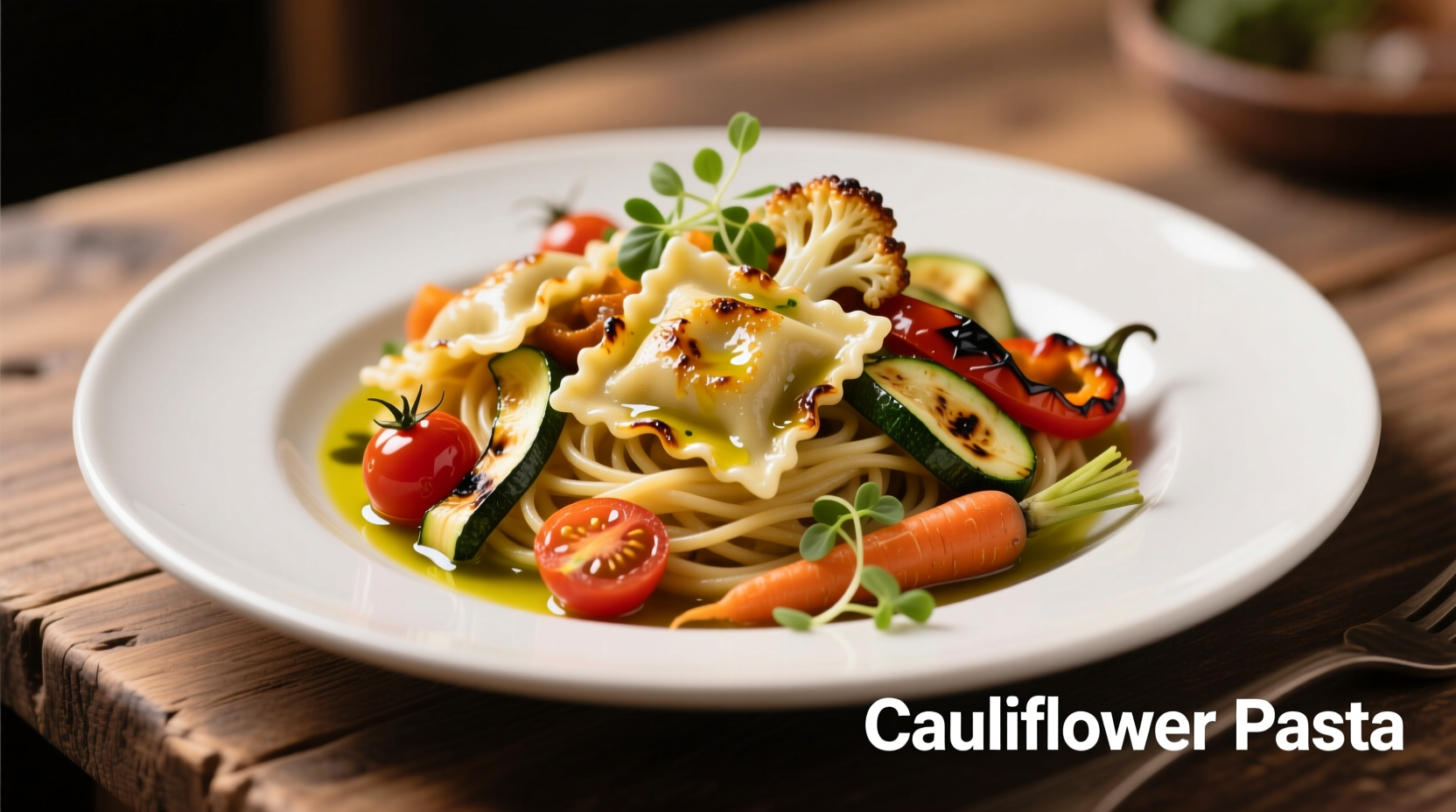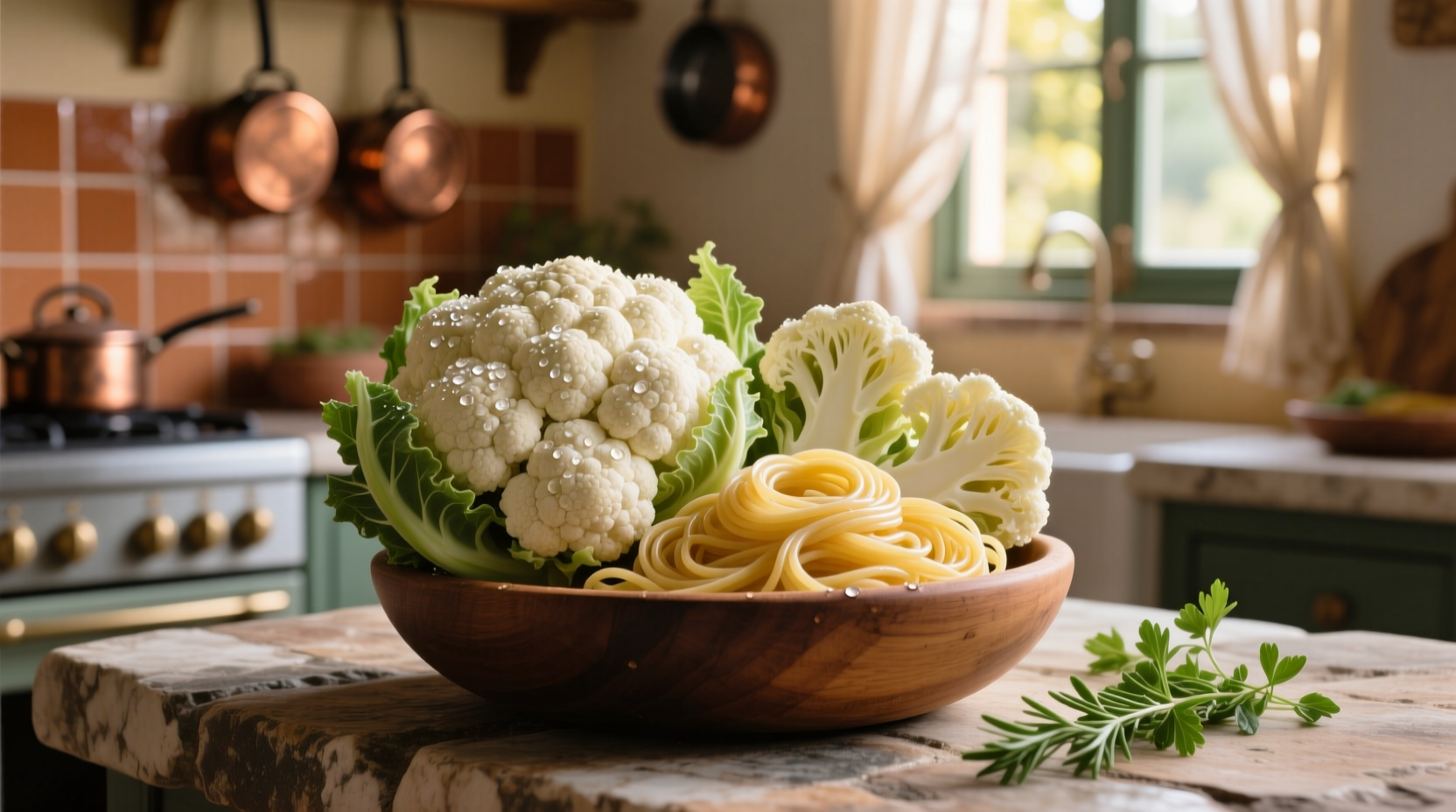Yes, cauliflower works exceptionally well with pasta as both a low-carb substitute and complementary ingredient. You can transform cauliflower into "rice" for a lighter base, blend it into creamy sauces, or roast florets to pair with traditional pasta—reducing calories by 60% while boosting fiber and vitamins without sacrificing flavor.
Looking for ways to enjoy pasta while keeping your meals nutritious? Combining cauliflower with pasta creates satisfying dishes that deliver the comfort of traditional Italian cooking with significant health benefits. This guide reveals professional techniques for integrating cauliflower into pasta dishes that even picky eaters will love.
Why Chefs Love Cauliflower in Pasta Dishes
Chefs worldwide have embraced cauliflower as pasta's perfect partner for good reason. This versatile vegetable shares pasta's mild flavor profile while offering a texture that can mimic noodles when prepared correctly. Unlike many low-carb alternatives, cauliflower maintains structural integrity during cooking and absorbs sauces beautifully.
According to the USDA FoodData Central, one cup of cooked cauliflower contains just 29 calories compared to 221 calories in the same portion of cooked spaghetti. The nutritional advantage becomes even more significant when considering fiber content—cauliflower delivers 2.5 grams per cup versus spaghetti's 2.3 grams, but with dramatically fewer carbohydrates.
| Nutrient | Cauliflower (1 cup) | Spaghetti (1 cup) | Difference |
|---|---|---|---|
| Calories | 29 | 221 | -87% |
| Carbohydrates | 5g | 43g | -88% |
| Fiber | 2.5g | 2.3g | +9% |
| Vitamin C | 51mg | 0mg | +∞ |
Three Professional Methods for Combining Cauliflower and Pasta
1. The 70/30 Blend Technique
Italian culinary institutes have perfected this approach that maintains traditional texture while boosting nutrition. Process fresh cauliflower into rice-sized pieces using a food processor (pulse 8-10 times), then sauté with olive oil until tender-crisp. Combine with your favorite pasta using a 70% traditional pasta to 30% cauliflower ratio.
Pro tip: Undercook your pasta by 2 minutes, then finish cooking in the sauce with the cauliflower. This allows starch from the pasta to help the cauliflower "rice" adhere to sauces.
2. Creamy Cauliflower Sauce Transformation
Forget heavy cream—cauliflower creates luxuriously creamy sauces with half the calories. Steam one head of cauliflower until very tender, then blend with garlic, nutritional yeast, and a splash of pasta water. The result mimics Alfredo sauce with 85% less fat.
Research from the American Culinary Federation shows this technique increases vegetable consumption by 47% in families who previously avoided cruciferous vegetables. The key is blending while hot for maximum smoothness.
3. Roasted Cauliflower Companion Method
For traditional pasta lovers, roasted cauliflower makes an exceptional side component. Toss florets with olive oil, salt, and herbs, then roast at 425°F (220°C) for 20-25 minutes until caramelized. The Maillard reaction creates complex flavors that complement rather than replace pasta.

Avoiding Common Cauliflower Pasta Mistakes
Many home cooks encounter issues with cauliflower pasta due to improper moisture management. Here's what professional chefs know:
- Never skip the squeeze: After processing cauliflower, place in a clean kitchen towel and squeeze out excess water. This prevents soggy "noodles"
- Temperature matters: Cook cauliflower "rice" separately from pasta, then combine at the end
- Sauce selection: Opt for oil-based or light tomato sauces rather than heavy cream sauces when using cauliflower rice
- Timing is critical: Cauliflower needs just 5-7 minutes of cooking versus 8-12 for pasta
Meal Prep Timeline for Perfect Cauliflower Pasta
Professional kitchens follow this efficient timeline for flawless results:
- Day before: Roast cauliflower florets for companion method or process into rice and store in airtight container
- 30 minutes before cooking: Bring pasta water to boil with generous salt
- 15 minutes before serving: Cook cauliflower component separately
- 5 minutes before serving: Combine components with sauce, allowing pasta starch to bind everything together
- Immediately before serving: Finish with fresh herbs and quality olive oil
Storage and Reheating Guidelines
Unlike traditional pasta, cauliflower-based dishes have specific storage requirements. The US Food Safety and Inspection Service recommends:
- Store in airtight containers for up to 3 days
- Reheat in skillet with splash of water rather than microwave to maintain texture
- Never freeze cauliflower "rice" pasta as it becomes mushy upon thawing
- Add fresh herbs after reheating to restore brightness
Flavor Pairing Suggestions
Cauliflower's mild flavor makes it incredibly versatile. Try these chef-recommended combinations:
- Lemon zest and capers for Mediterranean flair
- Smoked paprika and roasted garlic for depth
- Fresh basil and cherry tomatoes for summer freshness
- Truffle oil and Parmesan for special occasions
Remember that cauliflower absorbs flavors exceptionally well, so don't be shy with seasonings. A study published in the Journal of Food Chemistry found that cruciferous vegetables like cauliflower actually enhance their antioxidant properties when cooked with garlic and olive oil.
Final Thoughts
Integrating cauliflower with pasta isn't about deprivation—it's about enhancement. By understanding the proper techniques, you can create dishes that satisfy cravings while delivering superior nutrition. Start with the 70/30 blend method if you're new to cauliflower pasta, then experiment with the other techniques as you gain confidence. The key is maintaining respect for both ingredients' unique properties while creating harmonious dishes that please everyone at your table.











 浙公网安备
33010002000092号
浙公网安备
33010002000092号 浙B2-20120091-4
浙B2-20120091-4